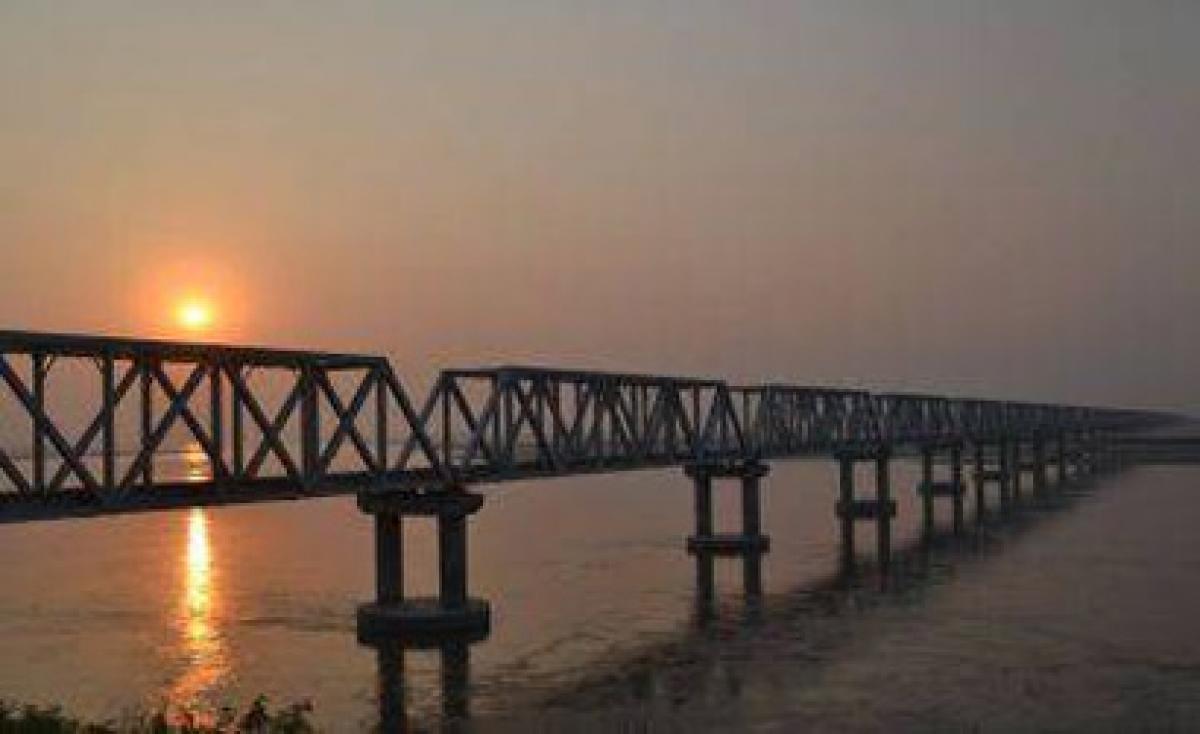Live
- Avanthi Srinivas bids adieu to YSRCP
- $2.2 trillion in infra investment to help India become $7 trillion economy by 2030
- NLC India Limited’s First Supercritical Power Plant Begins Commercial Operation
- YouTube Expands AI Auto-Dubbing to More Creators
- Australia: Two teens arrested over shooting, car fire in Sydney
- Dedicated Mirasi of Vedanta Desikar temple passes away
- Attacks on Hindus in B'desh: Why are Nobel laureates from Bengal not saying a word, asks Anirban Ganguly
- Civic chief inspects MSME survey
- MLA inaugurates development projects in Chittoor
- SBI offers collateral-free loans to empower farmer groups
Just In

It\'s an area prone to annual devastating floods but little empirical data about it was available to anticipate potential disasters and maintain resilient livelihoods for the millions of people inhabiting the area. Now a Kathmandu-based international organisation dedicated to environmentally-sound mountain development strategies has set up an information system to tackle the threat.
It's an area prone to annual devastating floods but little empirical data about it was available to anticipate potential disasters and maintain resilient livelihoods for the millions of people inhabiting the area. Now a Kathmandu-based international organisation dedicated to environmentally-sound mountain development strategies has set up an information system to tackle the threat.
"We have created a platform known as the Kosi Basin Information System (KBIS) that integrates data on climate change, land use, sedimentation, and water-based livelihoods to help individuals understand the changes happening in the basin," Shahriar Wahid, Project Coordinator for the International Centre for Integrated Mountain Development (ICIMOD), told IANS here.
He said the platform also provides a 48-hour flood warning, using data collected from satellite technology and national weather agencies. Last monsoon, for the first time, Nepal's Department of Hydrology and Meteorology used the regional flood outlook to issue a flood warning, added Wahid, who was here for a two-day knowledge forum workshop.
The project's partners from Nepal, India and China have been working for the past two years to generate knowledge and help communities in the basin prepare for disasters and maintain resilient livelihoods.
"The data and information are used by several institutions in India, Nepal and China for collaborative and development-oriented research on water, food, energy and environment in the basin," Wahid said.
He said KBIS aims to facilitate data and information-sharing and promote inter-disciplinary collaboration between different water stakeholders such as technical professionals, researchers and common people.
Floods and related disasters are a perennial concern in the Kosi basin, where seasonal monsoon rains and glacial melting frequently lead to dangerously-high water levels in the river. Bihar, where the Kosi merges with the Ganga, is India's most flood-prone state, with 76 percent of residents in the northern regions vulnerable to recurring floods.
Bihar annually suffers loss of life, property, infrastructure, and agriculture due to floods. According to the Bihar State Disaster Management Authority, floods displaced 33,200 people in 2014.
Kosi is one of the most sediment-laden rivers in the world, making it highly prone to flooding. One of the most serious disasters occurred in August 2008 with the breaching of the Kusaha embankment near the India-Nepal border, resulting in flooding of five districts of north Bihar.
The floods killed over 400 people and rendered nearly three million people homeless and destroyed crops spread over 840,000 acres of land.

© 2024 Hyderabad Media House Limited/The Hans India. All rights reserved. Powered by hocalwire.com







